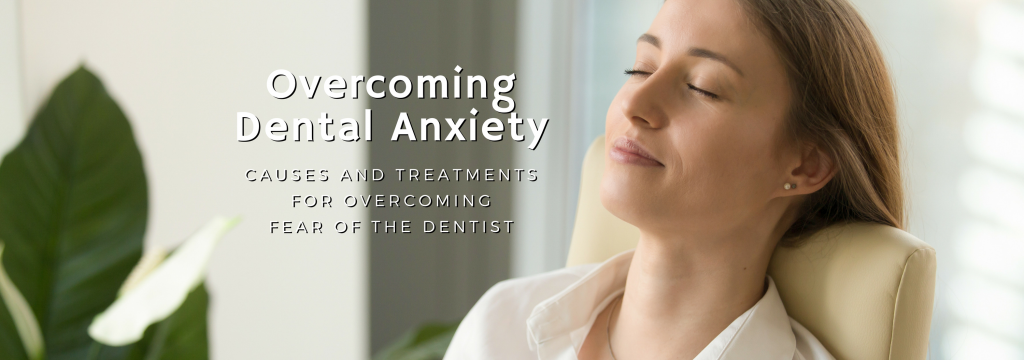 Does the mere thought of seeing a dentist and sitting in a dental chair make you tremble and nervous? You’re not alone! Yes, dental anxiety isn’t uncommon. It prevents you from seeing a professional dentist for regular dental care. If the anxiety is not addressed, it may cause a lot of oral health problems that can steal your smile away.
Does the mere thought of seeing a dentist and sitting in a dental chair make you tremble and nervous? You’re not alone! Yes, dental anxiety isn’t uncommon. It prevents you from seeing a professional dentist for regular dental care. If the anxiety is not addressed, it may cause a lot of oral health problems that can steal your smile away.
People are anxious about dental visits for various reasons.
- Anticipated pain.
- Traumatic dental experiences.
- The smell and ambiance of the dental office.
- Feeling of helplessness.
- Feeling of embarrassment or uneasiness.
- Gag reflex.
Trusting your professional dentist is one of the most important factors to overcome dental anxiety and trust involves good communication between you and your dentist. When you feel informed and in control during a visit, you’re typically less fearful. When you’re honest about your fears and you find it hard to manage dental anxiety, your dental doctor could give you sedation for dental treatment.
Sedation dentistry is a process of using medication to help patients stay calm and relax throughout the dental procedure. Although sometimes it is referred to as “sleep dentistry” or “twilight dentistry”, most patients remain conscious, but feel drowsy. A DOCS Certified Dentist (certified by the Dental Organization of Conscious Sedation) will help you determine what level and type of sedation is best for you.
4 Levels of sedation
- Minimal sedation – you feel deeply calm and relaxed though you’re still conscious and aware.
- 2. Moderate sedation or conscious sedation – you may become groggy during the procedure, you may mumble, but you cannot remember much about the procedure.
- Deep sedation—you are on the edge of sleep or almost unconscious, but can still be awakened.
- General anesthesia– it is administered when undergoing major surgery. You are deeply asleep and completely unconscious during the procedure and you’ll not be awakened until the effects of the anesthesia subside or are reversed with medication.
3 Sedation Options
- Inhalation
This sedation option is the most common form in dentistry. It is administered through the inhalation or breathing of nitrous oxide gas (a.k.a. laughing gas) and works well for those with mild anxiety. The gas tends to subside quickly so you can drive yourself home after the procedure.
- Oral
This option is taken orally in the form of a pill before the dental procedure or administered by a dental doctor under the tongue. This is best used for those with moderate or severe dental fear and can be combined with Nitrous Oxide. Most sedated patients sleep during the procedure and assistance is needed when returning home.
- Intravenous (IV)
The sedative medication is administered straight into a vein, so it works more rapidly. This method allows the DMD Certified Dentist to constantly adjust the level of sedation.
Although sedation for dental treatment helps relieve the anxiety and fears that often accompany a dental visit, a patient will still need an injection of local anesthesia to eliminate the pain brought by the procedure. A patient is usually given sedative medication prior to getting anesthesia to reduce any nervousness about its injection.
Many safe and comfortable techniques can make dental care less fearful, these include an inviting dental office with a Comfortable Environment Dental Practice and an expert dentist for sedation dentistry. Don’t let fear and anxiety stop you from getting a healthy, beautiful smile. Find a dental clinic that will make you relaxed and be at ease.


